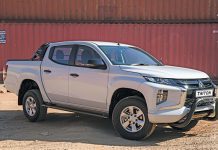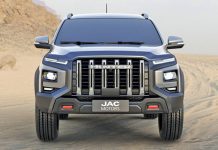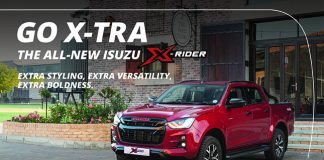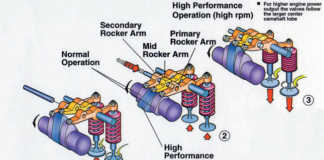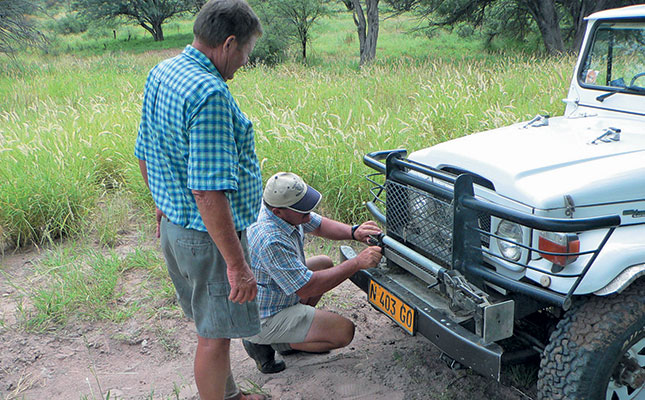
Photo: Chris Nel
Finding a good second-hand bakkie is more difficult than finding a good pre-owned car.
Bakkies usually work harder than cars and are therefore subject to more wear and tear.
READ The driverless tractor is here
They are often also driven by employees, and it’s human nature not to look after other people’s property.
Do your homework
The first thing to decide is what type of bakkie you want. Do you require a one-ton bakkie, or is a half-ton unit sufficient for your needs?
Do you want a petrol or a diesel engine? Would you prefer a manual or an automatic transmission? Each of these options has advantages and disadvantages.
A number of websites list the second-hand models on the market. They will enable you to compile a list of average prices and the availability of potential purchases.
The Internet can also give an idea of the reputation of various models.
Type in sentences such as “Model X advantages and disadvantages” to get both sides of the picture. And make a list of the features you like and don’t like, in case you forget to look for them while inspecting a bakkie.
Magazine road tests can be a useful source of information, but don’t pay too much attention to the published fuel consumption figures. Consumption depends so much on driving style and usage that they tell you very little.
One-ton or half-ton?
A half-ton (sometimes three-quarter-ton) bakkie is usually based on a sedan in the same model line-up.
It will thus share the same front wheel-drive passenger car substructure and suspension layout, and have the same advantages and disadvantages.
The road springs may be slightly stiffer to carry the extra load and cope with rough roads.
Such a vehicle is usually more comfortable than a one-tonner, but is unlikely to be tough enough for farm duties.
In contrast, most one-ton bakkies are designed as workhorses. The body is usually mounted on a separate steel chassis, and the suspension, gearbox and rear axle are built to last longer than those of an average car.
In the interest of longevity, the engine is detuned: it develops less power per litre than the same unit fitted to the car.
Luxury features, such as those fitted to double cab versions, are of secondary concern. A one-ton bakkie is thus a wise choice for a hard-working vehicle, but the purchase and maintenance costs will be higher than those for a half-tonner.
Turbo or not turbo?
Unblown petrol or diesel engines (engines not fitted with a turbocharger) make excellent power units for workhorses.
The Toyota Land Cruiser 70-series pickup is the only unblown diesel engine bakkie still available new, but you may find some older unblown Japanese bakkies in the marketplace.
READ How does a car battery work?
The addition of a turbo, which increases the power and torque output in proportion to the boost pressure, changes the picture. Turbos run at about 200 000 rpm at full boost, and the impeller in the exhaust manifold and part of the shaft becomes red-hot.
The combination of heat and high speed means that special bearings have to be used.
These cannot function properly unless very clean high-performance oil is used. Engine oil must be changed at the recommended intervals; the casual attitude towards service intervals that an unblown engine can tolerate will not do for a turbocharged engine.
On older turbocharged engines, drivers were advised to let an engine idle for a minute or so after a hard workout to let the turbo and its shaft cool down.
This was done because the oil supply to the turbo bearing was cut off when the engine stopped.
Many modern engines have a special oil supply that does not depend on engine rotation, but letting a turbo cool down is still a good idea.
Another problem associated with turbocharged engines is that the high torque delivery at low engine speeds tends to invite drivers to stay in a high gear and accelerate at full throttle from low speed without changing gear.
This habit, called lugging, causes the crankshaft to shake itself like a wet dog, which increases drive-train and engine stress to a level that may eventually lead to failure (see ‘Torsional vibration’ in FW, 11 August).
Turbocharged bakkies are fun to drive and can be highly economical at small throttle openings, but my personal (conservative) opinion is that a new turbocharged bakkie should not be kept past the end of the warranty period.
A second-hand turbocharged bakkie should not even be considered unless you know its owner and the vehicle’s service history.
Manual or automatic?
A manual transmission wastes less energy to friction than most auto transmissions, but some of the latest dual-clutch automatics come very close to matching manual units in this respect.
The clutch unit on a manual transmission normally requires replacement every four years or so, depending on the driver’s habits. Most automatics, in contrast, have a long life if the transmission fluid condition is monitored from time to time.
Automatics have another major advantage: lugging is impossible, as the transmission changes to a lower gear before the engine even starts to feel the extra stress. An automatic transmission can thus be an engine saver, and it should be your choice if your bakkie is driven by somebody else.
Second-hand 4WD bakkies should be regarded with suspicion. If they have spent a lot of time off-road, the drive-train may be worn out.
Avoid bakkies that are fitted with dual-mass flywheels instead of a normal single flywheel and clutch. These units have such a poor service record, and are so expensive to repair, that a major parts supplier sells normal clutch kits to replace failed dual-mass units.
Test drive before buying
A test drive is essential. Observe whether the engine starts easily, and idles smoothly. With modern fuel injection these qualities are commonplace, but with an older carburettor and distributor setup, a difficult start and rough idle points to a lack of proper servicing.
Listen for any odd noises.
Neither engine, gearbox, final drive nor exhaust should make any undue noise. Unfortunately, only an expert on the particular model will be able to tell you whether any of the noises spells trouble.
READ JMC Boarding: Road test and impression
The bakkie should accelerate strongly and smoothly through the gears, but you should also lug the engine to bring out some vibration. If this is excessive, the drive-train or engine mounting may be worn out.
A manual clutch should not slip, and gear changes should be smooth, regardless of whether the transmission is manual or automatic. Look in the rear-view mirror for signs of smoking while accelerating and coasting.
Try to drive over a dirt road. The suspension should not make a knocking sound, and jolts should not lead to continued bouncing. If this does occur, the shock absorbers are most likely worn.
If the bakkie tries to turn sideways when you accelerate on corrugation, the shocks are definitely worn out.
Brake hard on a solid surface to see if the bakkie stops promptly and without making a noise. When you come to a stop, keep your foot hard on the pedal for about 30 seconds.
If the pedal goes down slowly there’s a leak in the braking system.
The steering wheel should turn without making a noise, and if you let go of the wheel on a level road the car should go straight for at least 300m and then slowly move to the left; most roads are cambered that way.
Make sure the bakkie feels secure while cornering.
After the drive, examine the exterior and interior of the vehicle, as well as underneath it for signs of damage, rust or repair. The tyres may be worn, but they can be replaced. Make sure that all the accessories work.
Open the bonnet and check the condition of the belts, hoses and battery.
Look at the colour of the water; dirty green or yellow indicates that an anti-freeze is present. Check the auto transmission fluid; it should be cherry-red. If it’s very dark, the auto transmission is in need of a service.
Lastly, take a friend with you. Even if your friend is not a mechanic, he/she may notice something you missed.
Jake Venter is a journalist and a retired engineer and mathematician. Email him at [email protected].


